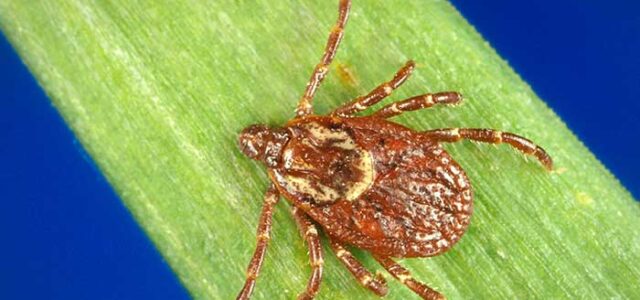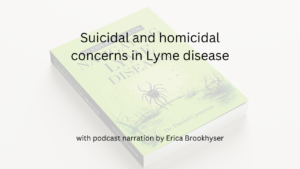Call for your appointment today 914-666-4665 | Mt. Kisco, New York

Welcome to another Inside Lyme Podcast with your host Dr. Daniel Cameron. In this episode, Dr. Cameron discusses findings from a recent study which examined the proficiency of clinicians at identifying ticks in the northeastern region of the United States.
The study by Laga and colleagues entitled “Proficiency at Tick Identification by Pathologists and Clinicians Is Poor” was published in The American Journal of Dermatopathology.¹ Using high-resolution photographs of ticks, the authors surveyed 115 health care providers, which included primarily medical students, medical residents, and physicians. CLICK HERE TO WATCH A VIDEO DISCUSSING TICK IDENTIFICATION WITH DR. CAMERON The survey was simple. Each health care provider was asked to look at high-resolution color pictures of ticks provided by the University of Rhode Island Tick Encounter Resource Center. (The dimensions of each image were 1 5/8 inches by 2 inches.)
The participants were asked to select one of 5 possible answers for each photograph:
The survey was simple. Each health care provider was asked to look at high-resolution color pictures of ticks provided by the University of Rhode Island Tick Encounter Resource Center. (The dimensions of each image were 1 5/8 inches by 2 inches.)
The participants were asked to select one of 5 possible answers for each photograph:
- American dog tick
- Deer/ blacklegged tick
- Lone Star tick
- Brown dog tick
- “I do not know”
The survey participants correctly identified 60% of the non-engorged black-legged ticks but only 34% correctly identified a partially engorged black-legged tick.
“Likely explanations are that texts and media rarely show partially engorged ticks,” the authors explain. Additionally, “the color contrast seen between the scutum and abdomen in the blacklegged tick, for example, is lost after 2.5–3 days of engorgement.” Participants had more difficulty identifying the other tick species:- 1 in 2 participants identified a non-engorged Lone Star tick;
- 1 in 3 identified a non-engorged American dog tick;
- 1 in 4 identified a non-engorged adult Brown dog tick.
Medical students and non-physician health care providers (i.e., nurses, physician assistants) fared the worse with only about 1 in 4 correctly identifying the ticks.
In everyday practice, health care providers do not view high-resolution photographs of ticks. Their experience, instead, is with actual ticks which appear much smaller. “In addition to choosing the easier-to-identify female ticks for our test, we also chose adult rather than nymphal ticks for the quiz,” the authors explain. “Nymphal ticks, in addition to be being smaller, tend to have more muted colors and less distinctive markings on their scutums.” In actual practice, it’s important that health care providers can identify engorged ticks. Yet, the survey shows that engorged ticks were more difficult for providers to identify. The following questions are addressed in this podcast episode:- How often is the tick seen?
- Have you found it difficult to identify a tick?
- What are a few tips to identifying ticks?
- What diseases does each tick carry?
- Why is it important to be able to identify an engorged tick?
- What is the risk of an engorged tick?
- What educational information should clinicians receive?
- What do Lyme disease patients know?
- What are treatment options for a tick bite?
- What are the risks and benefits of a single 200 mg dose of doxycycline for a tick bite?
- How effective is testing of ticks for diseases?
- Thanks for listening to another Inside Lyme Podcast. You can read more about these cases in my show notes and on my website @DanielCameronMD.com. As always, it is your likes, comments, reviews, and shares that help spread the word about Lyme disease. Until next time on Inside Lyme.
Inside Lyme Podcast Series
This Inside Lyme case series will be discussed on my Facebook and made available on podcast and YouTube. As always, it is your likes, comments, and shares that help spread the word about this series and our work. If you can, please leave a review on iTunes or wherever else you get your podcasts.References:
- Laga AC, Granter SR, Mather TN. Proficiency at Tick Identification by Pathologists and Clinicians Is Poor. Am J Dermatopathol. May 11 2021.



